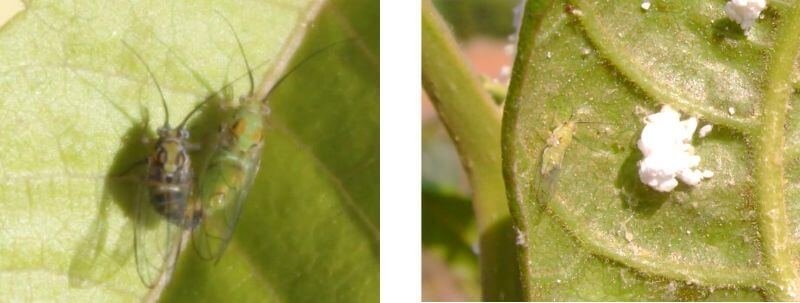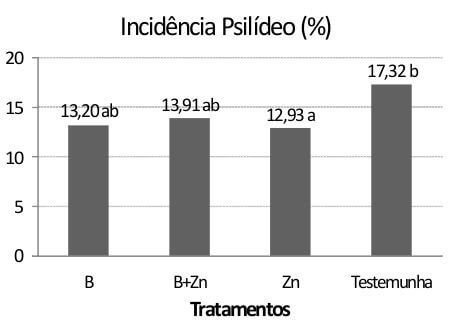CROP HANDLING
Importantly, to achieve productivity under normal growing conditions, it is necessary to treat the crop with soil corrections, weed control, fertilization and pruning; which should be carried out until the fourth year of the crop, a period regarded as “Implementation”.
Liming and fertilization recommendations
Studies carried out at UFLA and other institutions enabled to do some planting recommendations for forest species. For Australian Cedar, several studies have been carried out, seeking more consistent information on the management of the species, aiming at its proper development.
One should be careful as to not generalize to Australian Cedar the fertilizing recommendations adopted for other crops (eucalyptus, for instance), they are distinct species vis-à-vis their demand for fertilization and plant nutrition.
Liming should be administered to the entire area. We recommend the use of dolomitic limestone (> 12% MgO) in order to raise the base saturation to 60% in the 0-20 cm layer. Soil analysis of the 20-40 cm layer will define whether or not the application of gypsum is in order. In non-mechanized areas we recommend the dose of 200 grams of limestone and/or gypsum per hole. Consult with a qualified technician before using any soil correction or fertilizer.
Planting fertilization consists of applying 350 grams per hole of simple superphosphate as a source of phosphorus and sulfur, the latter being a limiting nutrient to the crop development. This should be done once only, upon planting.
In general, one should also use a lower reactivity phosphate (29% of total phosphorus, 9% soluble) in the hole bottom or planting furrow. In this case we suggest a dose of 250 grams per plant.
Cover fertilization should be divided in at least three installments, at 30, 60 and 90 days after planting, preferably in rainy days, with the application of an average dose of 50 grams of 20-00-20 per hole (in each fertilization), totaling 150 grams of the product at the end of the 3rd fertilization installment. Although potassium is a nutrient that has shown minor responses in studies carried out under field conditions, due to our natural nutrient-deprived soils and considering that this is a long standing crop, we suggest its administration together with nitrogen fertilization, using the formula mentioned above in order to prevent its deficiency.
We also recommend the administration of micronutrients (usually FTE Br 12 or equivalent) in the amount of 10 grams per plant by the end of the rainy season. AVOID leaf sprays or other sources of micronutrients.


Lab and field nutrition experiments with Australian cedar plants.
The White Psyllid
The white psyllid is an insect that depending on the situation, can bring harm to the Australian cedar crop. A large population of these insects in the field can harm growth and increase plant overshooting. Australian cedar clonal materials have resistance at different levels against the white psyllid, with its seminal material being highly susceptible.
There have been recent reports regarding the importance of good nutritional management of plantations, using boron and zinc micronutrients to reduce the incidence and severity of white psyllid attacks. The most appropriate action for these situations is to seek the help of a qualified professional to assist in the problem.
White psyllid nymphs are easily recognized by a secretion, resembling a white foam, present on its back.
The psyllid mainly occurs in the dry season, between March and September.
There are many natural enemies to this pest, the main ones being the lace wing (Chrysopinae, Leucochrysini), some species of bugs and small spiders.

| Adult psyllid mating. | White adult psyllid (left) and nymph with white cover (right) side-by-side. |

| Psyllid classical symptom: malformed and shriveled leaves. | Psyllid cluster in a soft six-month seedling. |
Preliminary studies regarding the white psyllid control
Field studies have shown the best ways to fight the psyllid – a sucking insect commonly found in Australian cedar plantations.
Such studies were carried out in the municipality of Campo Belo, Minas Gerais, in one-and-a-half year-old trees. We list some relevant considerations about these studies below.
A study involving micronutrients to control the white psyllid
In relation to fertilization with micronutrients, there were statistically significant differences between the control and treatment samples regarding Zn and B (Figure 3, Table 3) performed in one-year-and-a-half old trees in the municipality of Campo Belo, MG. There were lower psyllid incidences in subplots with Zn, B and B + Zn, 12.4, 13.9 and 12.4%, respectively, with the highest rate being in the control plots (17.32%), showing the importance of proper mineral nutrition for cedar plants.


Studies using insecticides to control the white psyllid
In controlling the psyllid by spraying insecticides in Australian cedar, in the municipality of Campo Belo in one-and-a-half year-old trees, the lowest incidences of insects in the leaflets were found in the plots treated with imidacloprid, triazophos + imidacloprid, triazophos + Imidacloprid + mineral oil; Deltamethrin + Imidacloprid + Deltamethrin + Imidacloprid + mineral Oil (Table 1). The lowest pest intensity was found among trees treated with Imidacloprid (11.75%).

| Treat | Products | Dose |
| 1 | Mineral Oil | 0.5% in the tail |
| 2 | Triazophos | 3ml/L |
| 3 | Deltamethrin | 2ml/L |
| 4 | Imidacloprid | 0.4g/L |
| 5 | Triazophos + imidacloprid | 3ml/L + 0.4g/L |
| 6 | Triazophos + imidacloprid + mineral oil | 3ml/L + 0.4g/L + 0.5% on the tail |
| 7 | Deltamethrin + imidacloprid | 2ml/L + 0.4 g/L |
| 8 | Deltamethrin + imidacloprid + Mineral Oil | 2 ml/L + 0.4 g/L + 0.5 |
| 9 | Control | – |
Characteristics of the treatment with insecticides.
